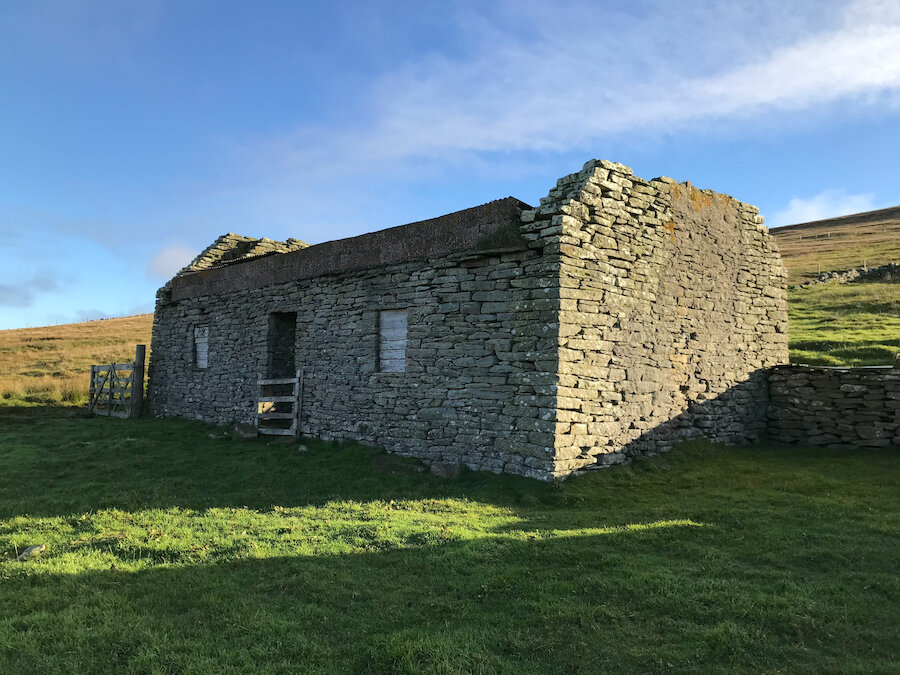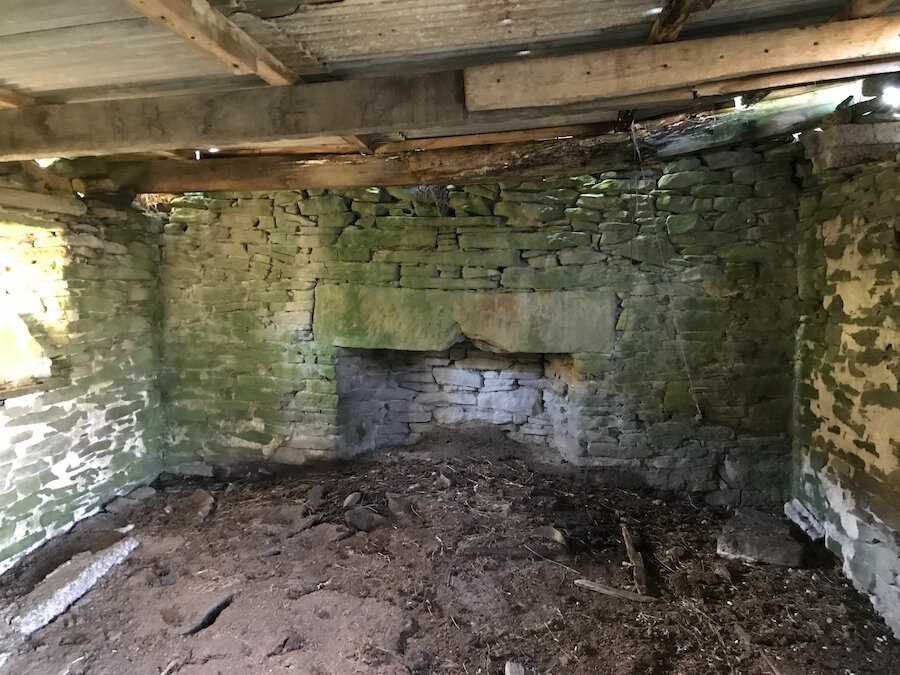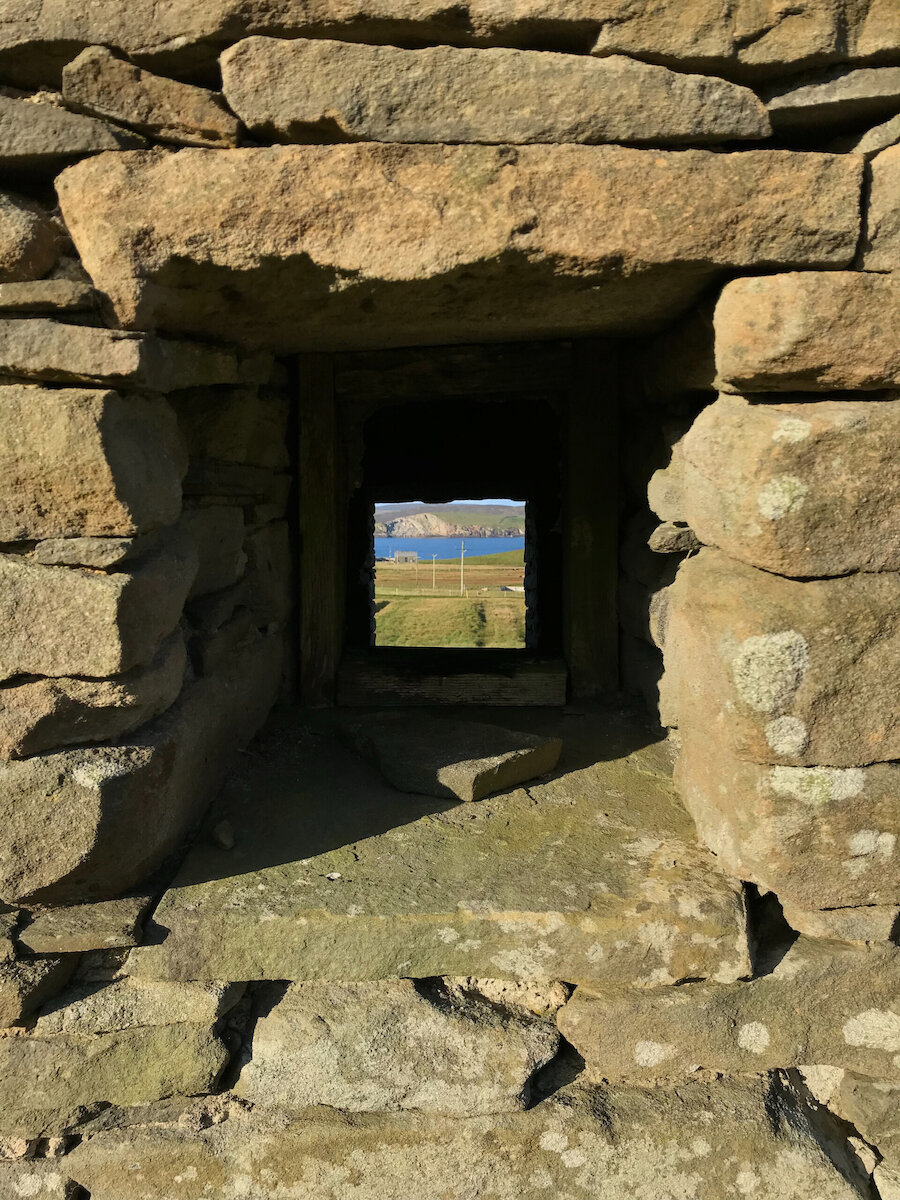For Shetland residents today, the prospect of an additional 10,000 people within a population of approximately 23,000 requires a degree of imagination. And yet one of the most frequently noted aspects of the Shetland landscape, especially by the visitor, is the number of abandoned 19th and early 20th century dwellinghouses and outbuildings. Some may be replete with items of everyday life, indisputably a home with which to look at and empathise; an in situ rayburn, window glass, crockery and wallpaper, while others consist of merely masonry wall lines, useful artefacts such as roof timbers long since having been recycled or recommissioned.
The 1861 census recorded almost 32,000 island residents, significant and sizeable during the era of subsistence agriculture and a reliance upon the sea for both employment and sustenance. Given the expanses of hill and peat moorland juxtaposed with smaller pockets of often coastal cultivatable areas, from a historical perspective Shetland was always marginal and finely-balanced for supporting an increasing population. It is understandable therefore, albeit tinged with melancholy, how a move towards aggregated holdings capable of supporting large agricultural units, specifically sheep farms with imported commercial breeds, was synonymous to an extent with population decline as emigration took Shetlanders truly across the world.


